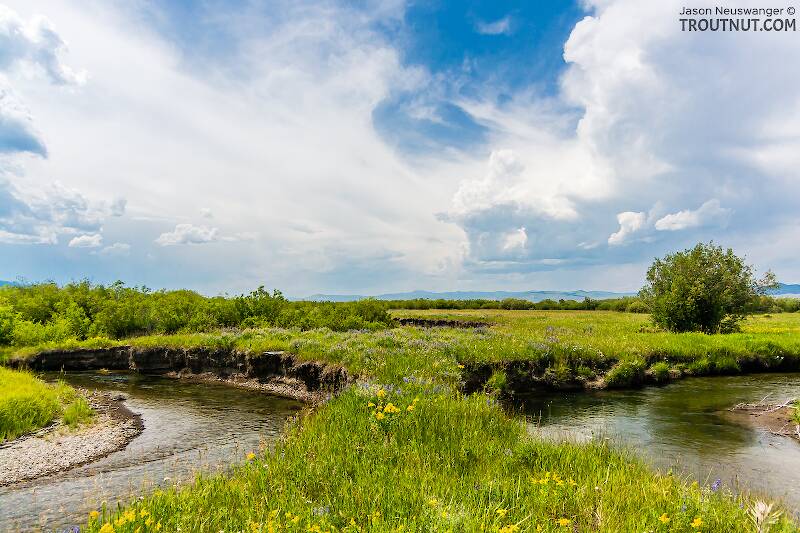
Blue-winged Olives
Baetis
Tiny Baetis mayflies are perhaps the most commonly encountered and imitated by anglers on all American trout streams due to their great abundance, widespread distribution, and trout-friendly emergence habits.


Mayfly Species Caenis anceps (Angler's Curses)
Species Range
Physical description
Most physical descriptions on Troutnut are direct or slightly edited quotes from the original scientific sources describing or updating the species, although there may be errors in copying them to this website. Such descriptions aren't always definitive, because species often turn out to be more variable than the original describers observed. In some cases, only a single specimen was described! However, they are useful starting points.
Male Spinner
Wing length: 2 mm
Allied to C. ridens (now a synonym of Amercaenis ridens), but smaller, with brownish thorax and wholly pale abdomen; forceps short.
Head pale; a purplish black transverse band along the front margin of the vertex; another band, slightly paler and incomplete on the median line, between the eyes; posterior margin narrowly purplish black. Antennae pale. Pronotum pale, with faint darker shading laterally. Mesonotum light reddish brown, rather bright; median line very narrowly darker; faint darker shading on the postero-lateral margins of the scutellum. Pleura and metanotum paler reddish brown; blackish pencilings on the pleura anterior to the wing root, below the wing, and above the bases of the middle and hind legs. Sternum yellowish. Wings semi-hyaline whitish, the subcosta and radius purplish for most of their length. Legs whitish; fore femur with a darker band near the apex, fore tibia darker basally, so that the ‘knee’ appears purplish to dark smoky; middle and hind legs wholly pale, except that a very tiny black dorso-apical dot is present, in most specimens, on the femora. Abdomen wholly whitish, somewhat yellow-tinged apically; without stigmatic markings or darker shading on any segment. Forceps and tails whitish; forceps relatively short.
Start a Discussion of Caenis anceps
References
- Needham, James G., Jay R. Traver, and Yin-Chi Hsu. 1935. The Biology of Mayflies. Comstock Publishing Company, Inc.
Mayfly Species Caenis anceps (Angler's Curses)
Species Range
Common Names
Resources
- NatureServe
- Integrated Taxonomic Information System
- Global Biodiversity Information Facility
- Described by Traver (1935)

